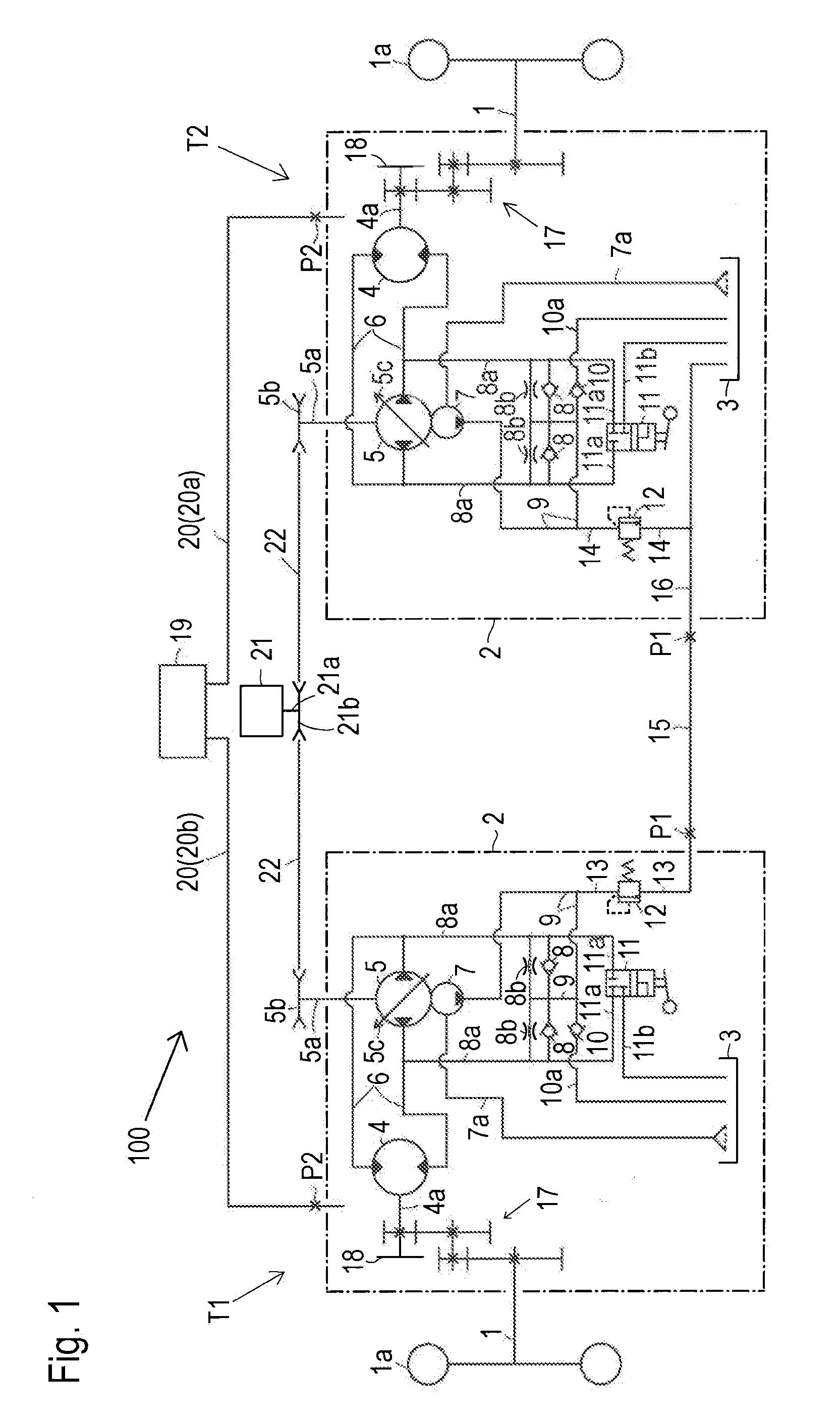Hydraulic transmission system for zero-turn vehicle
a transmission system and zero-turn technology, applied in the direction of fluid couplings, couplings, transportation and packaging, etc., can solve the problems of insufficient fluid flow in the high-pressure pipe to operate smoothly the hydraulic actuator and cool the entire hydraulic transmission system. , to achieve the effect of promoting fluid circulation
- Summary
- Abstract
- Description
- Claims
- Application Information
AI Technical Summary
Benefits of technology
Problems solved by technology
Method used
Image
Examples
Embodiment Construction
[0039]Referring to FIGS. 1 to 5, each of hydraulic transmission systems 100, 200, 300, 400 and 500 is adaptable as a transmission system for a zero-turn vehicle such as a lawn mower.
[0040]First, a common structure to hydraulic transmission systems 100, 200, 300, 400 and 500 will be described with reference to FIGS. 1 to 5. Each of hydraulic transmission system 100, 200, 300 and 400 includes a pair of transaxles T1 and T2. Each of transaxles T1 and T2 includes an axle 1 and a casing 2 supporting axle 1. Transaxles T1 and T2 are adapted in a zero-turn vehicle as right and left transaxles so that axles 1 supported by casings 2 of respective transaxles T1 and T2 serve as right and left axles 1 for supporting right and left drive wheels 1a of the vehicle. As detailed later, each of first and second transaxles T1 and T2 has an HST and a charge pump for charging fluid to the HST, first transaxle T1 is defined as draining fluid delivered from its own charge pump to a fluid sump of second tr...
PUM
 Login to View More
Login to View More Abstract
Description
Claims
Application Information
 Login to View More
Login to View More - R&D
- Intellectual Property
- Life Sciences
- Materials
- Tech Scout
- Unparalleled Data Quality
- Higher Quality Content
- 60% Fewer Hallucinations
Browse by: Latest US Patents, China's latest patents, Technical Efficacy Thesaurus, Application Domain, Technology Topic, Popular Technical Reports.
© 2025 PatSnap. All rights reserved.Legal|Privacy policy|Modern Slavery Act Transparency Statement|Sitemap|About US| Contact US: help@patsnap.com



